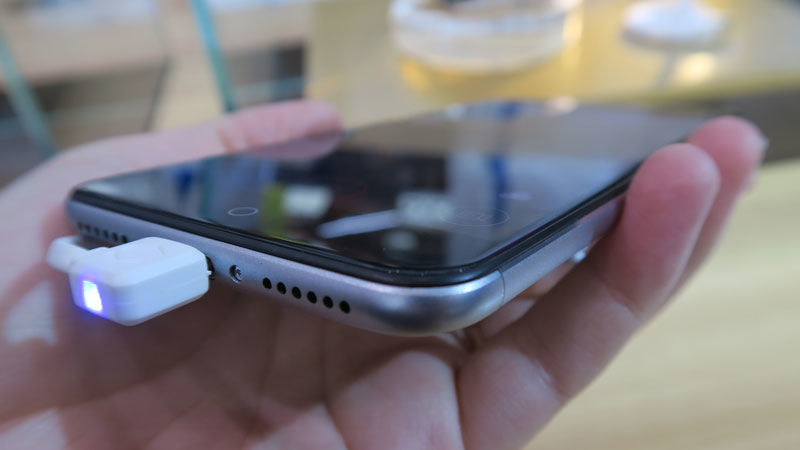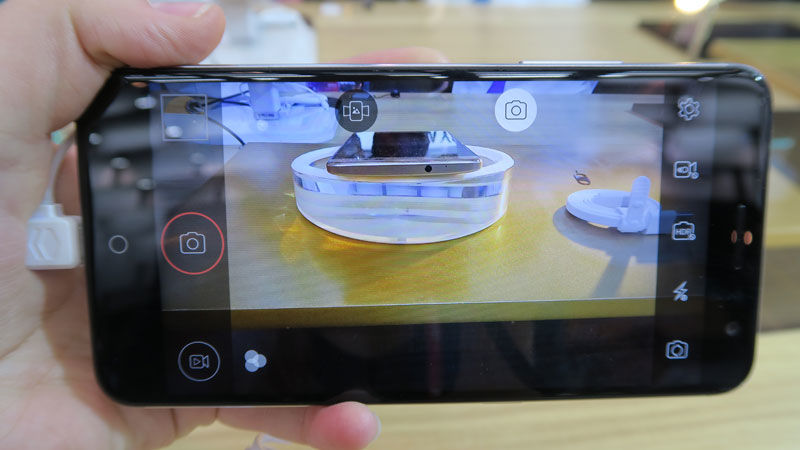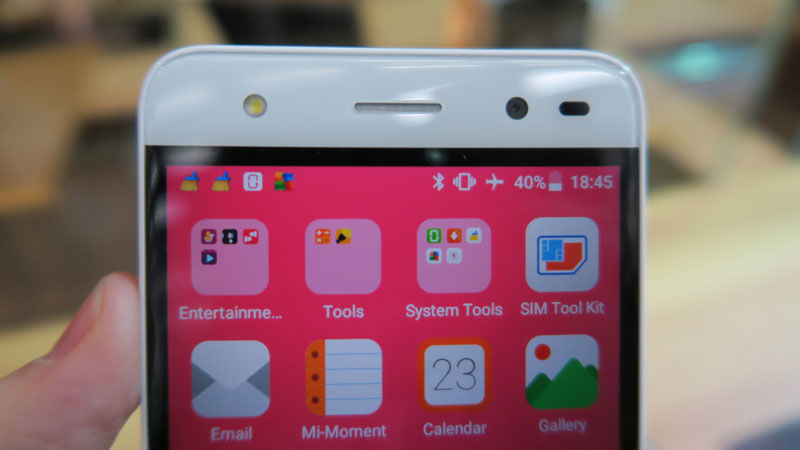Also see: Best Black Friday Phone Deals You might also like: The most anticipated phones coming out in 2016
ZTE Blade V7 & V7 Lite review: Release date & price
Aside from a vague estimate of ‘Summer,’ we couldn’t get a specific release date from the team at the ZTE stand. We do know that the V7 will cost 250 Euros (just under £200) and the Lite model will be 180 Euros (around £145), which is not a bad price when you consider the design and specs of these smartphones, as we talk about more below.
ZTE Blade V7 & V7 Lite review: Design & build
Both smartphones have sleek, stylish all-metal aluminium bodies. The V7 is particularly gorgeous, with a bright display featuring glass that’s slightly curved on the edges a bit like the iPhone 6s, making it really comfortable in the hand. It’s also nice and thin at 7.5mm at its thickest point. On closer inspection, the seams across the back of the smartphone are uneven and a bit creaky, which is an unfortunate giveaway that the good-looking phone comes with a mid-range price tag.
The V7 Lite is a bit thicker at 7.9mm and suffers from some similar creaky build flaws but it still has the curved edges and 2.5D display we like on the V7. The V7 is available in gold and silver with a black front, while the V7 Lite has a white front with a silver chassis.
ZTE Blade V7 & V7 Lite review: Hardware, specs & software
The screen on the V7 is 5.2in and 1080p HD, with an impressive 424ppi pixel density that you’ll find is crisp and colourful. The Lite isn’t as impressive, with 720 x 1280 pixels spread across a 5in display, equating to a 294ppi pixel density that means you can make out the individual pixels quite easily. Not let’s take a look at what’s beneath those screens. The V7 offers the better specs, with a MetiaTek MT6753 Octa-core processor at 1.3GHz paired with 2GB RAM. We’re expecting it to be fairly zippy but it’s unlikely to find itself anywhere near the top of our fastest smartphone chart when we get it back to our labs for benchmark testing. The Lite also has a MediaTek processor, this time the MT6735P, which is Quad-core rather than Octa-core which will slow things down a bit. It also has 2GB RAM, and both phones have 16GB of internal storage expandable up to 128GB thanks to a MicroSD card slot. That slot also doubles as a second SIM slot as both phones are dual-SIM.
When it comes to the camera, you’ll find a 13Mp camera on the rear of the V7 with a dual-LED flash. There’s auto-focus touch focus, face detection, HDR and panorama, as well as 1080p video at 30fps. On the front is a 5Mp camera for selfies.
The Lite’s cameras are 8Mp on the rear with a single LED flash and auto-focus, and there’s actually an 8Mp on the front too, also paired with an LED flash so squarely aimed at the selfie generation in this case. Like the V7, it also offers 1080p video at 30fps.
Interestingly, the Lite also has a fingerprint scanner on the rear which the higher-end V7 doesn’t offer, so thats another area where the Lite manages to be better than its bigger sibling. We’re not entirely sure what the thinking was here, but if a good front-facing camera or a fingerprint sensor is a deal-breaker for you then you’ll have to put up with the lesser specs of the V7 Lite or look to another smartphone manufacturer completely.
Neither phone is compatible with the newer 802.11ac WiFi standard but both offer Bluetooth 4.0 and charge via microUSB. The batteries are non-removable, and both are 2,500 mAh. You’ll find Android 6.0 Marshmallow on both phones with ZTE’s own interface overlaid, which looked a bit on the ugly side to us with bright and cartoon-like icons but it really comes down to personal taste. Ashleigh is Tech Advisor’s Head of Affiliate. Providing expert buying advice you can trust is her forte, helping you to find the most reputable consumer tech products and services, and ensuring you don’t spend a penny more than you should.





